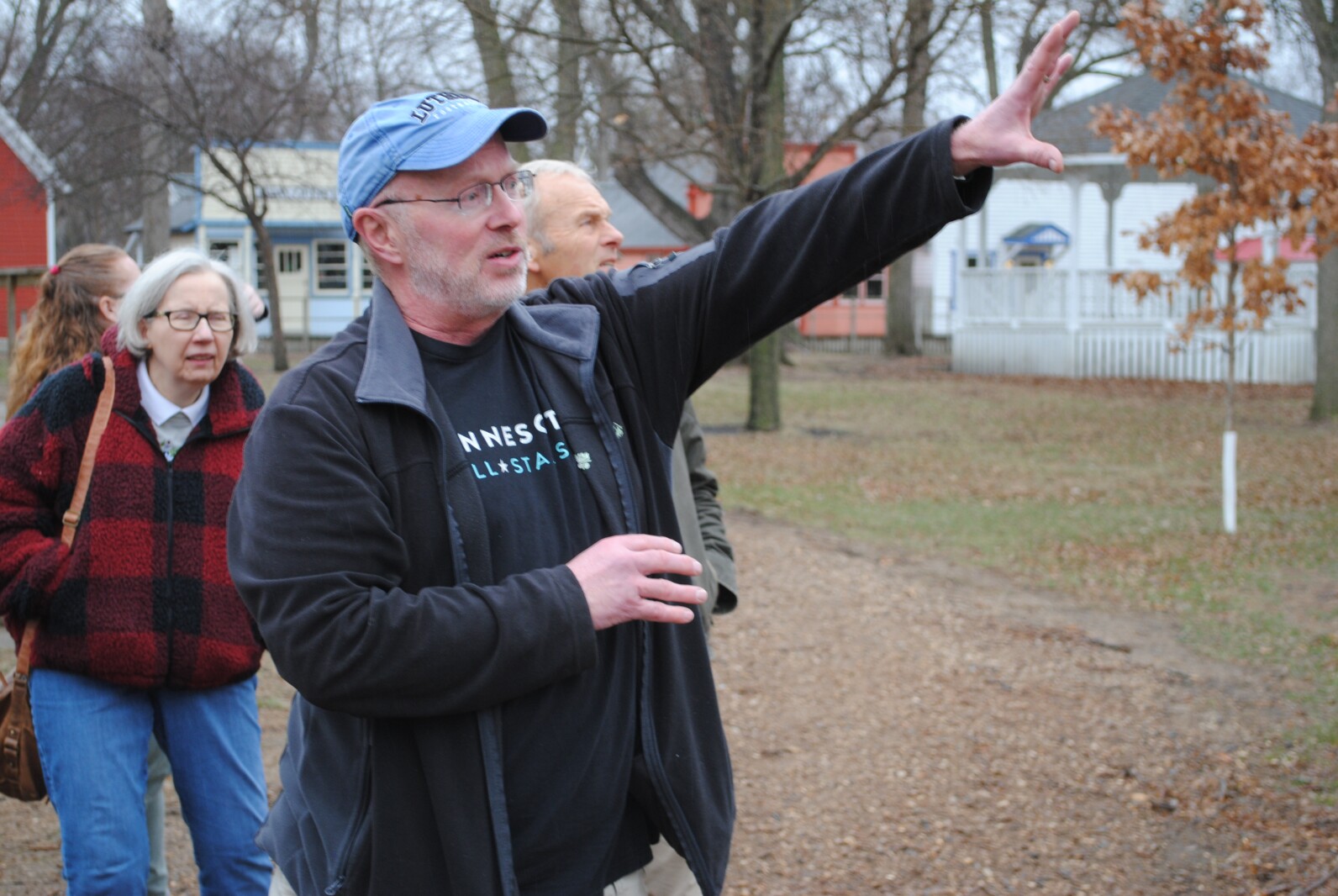— There are very few authentic, pioneer log cabins remaining to be found in the Minnesota farm country these days, but this one was.
“My cousin and his family have had it for about 75 years,” a dentist and private historian told the board of directors at an April 8 gathering. “They did not know it was a cabin until a piece of siding fell off.”
Now known as the Iverson Log Cabin, it was owned and believed built by Henry Iverson in 1879 or possibly earlier. It was hewed from large cottonwoods. The logs appear to be still in very good condition.
Its discovery presents a unique opportunity for the Historical Society, for two reasons, according to Ostlie.
For one, log cabins like this are indeed rare finds.
Just as important, these are times when many county historical societies are shrinking or reducing the work they do, according to Ostlie.
“We have a unique opportunity to expand and we’re looking forward to that,” he said.

In fact, the Historical Society is seizing this opportunity to launch a fundraising campaign with plans to move the two-story cabin to its Historic Chippewa Village campus in Montevideo. The 20-acre site includes a 1800s pioneer village with 24 buildings, including a church, millinery and blacksmith shops, and general store.
Already, contributions of more than $13,000 have been pledged from organizations including the Historical Society’s Endowment Board, Montevideo Knights of Columbus and the Montevideo Foundation. GCC Ready-Mix of Montevideo has offered to provide at no cost the concrete pad that will hold the cabin at its future home.
All together, it’s estimated that the Historical Society will need to raise $30,000 to move and locate the log cabin and an adjacent pioneer building to the Chippewa Village. The log cabin will be used to provide much needed space to offer a variety of exhibits, according to Barb Buseman, operations manager for the Historical Society.

The adjacent building that is now part of the log cabin will also be moved and located across from it in the Historic Chippewa Village. It will be used as an exhibit of an early day funeral home. It will be the Anderson Funeral Home in memory of Arnie Anderson and his business in Montevideo.
Speaking of memories, the Historical Society is now looking for anyone who may know anything about the log cabin’s owner, Henry Iverson. Chippewa County was originally part of Renville County, and was incorporated as a county on March 5, 1868. Ostlie said the earliest known plat map in the county’s possession is dated 1879. It’s from that map that Henry Iverson is identified as the owner of the cabin.
The Ostlie family purchased the cabin and property in 1948. Hunters leased the cabin. They put a metal roof on the building, said Ostlie. Siding outside and vinyl siding inside for decades hid the logs that comprise the cabin, he explained.
Ostlie told the Historical Society directors that the early map shows that Henry and his brother, Gilbert Iverson, each owned one-half of section 20 of west of present-day Watson, Gilbert owned the northern half.

Buseman has done some initial research, and quickly learned that there were a number of early-day county residents by the name of Henry Iverson. There are Iversons in the county today, and society members are hopeful of finding some with a family history of the cabin owner.
Watson was just starting to be developed as a village when the cabin was built. The town’s history, as preserved in a book by J. J. Oyen, speaks of the challenges the pioneers faced.
In 1866, there was the big flood that covered much of the area.
In January of 1873, there was the “Polar Wave” blizzard that lasted for days. One settler, who lived in a dugout carved in a river bluff near Watson, was found frozen after that storm. It’s believed he had been caught outside when the storm struck and could not find his dug out in the blinding snowstorm.
Someday, these and other stories of the county’s early days could be told with exhibits in the log cabin. Jim Thein of Thein Moving, Clara City, will be working with the Historical Society to relocate the cabin and adjacent building, Ostlie said.


Tom Cherveny / West Central Tribune
